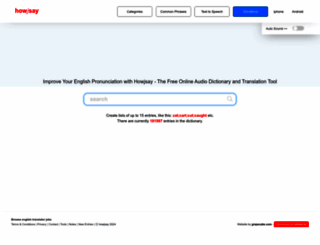Free Online English Pronunciation Dictionary | Howjsay | Learn to Pronounce English Words | Howjsay
Page Load Speed
736 ms in total
First Response
29 ms
Resources Loaded
620 ms
Page Rendered
87 ms

About Website
Click here to check amazing Howjsay content for United States. Otherwise, check out these important facts you probably never knew about howjsay.com
Learn How to Pronounce English Words | Natural Recordings by Native Speakers
Visit howjsay.comKey Findings
We analyzed Howjsay.com page load time and found that the first response time was 29 ms and then it took 707 ms to load all DOM resources and completely render a web page. This is quite a good result, as only 10% of websites can load faster.